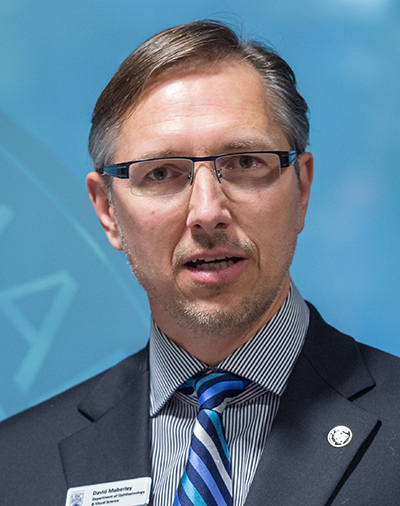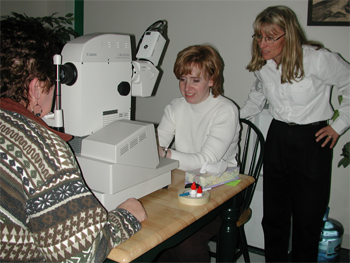Building on 15 years’ worth of work, the Head of UBC’s Department of Ophthalmology and Visual Sciences is leading a national project aimed at improving care for people with diabetic retinopathy living in rural and remote areas.
David Maberley will oversee an effort with participants from Ontario and Alberta to establish common processes for the diagnosis and triage of patients with diabetic retinopathy. The goal is earlier detection and more effective disease management, so fewer people lose vision as a result of their diabetes.
Diabetes often causes vessels in the retina to leak fluid or to bleed, distorting vision or causing more complete vision loss. In its most advanced stage, new abnormal blood vessels proliferate on the retina’s surface, which can lead to scarring, tissue loss, retinal detachment, and ultimately, blindness.
Dr. Maberley has worked for years to treat diabetic retinopathy in the province’s Aboriginal communities, creating a system in which roaming health professionals with specialized cameras look for signs of the disease. The digitized images are reviewed by Dr. Maberley in Vancouver, who then determines whether further assessment and treatment – and perhaps travel to regional or provincial centres, depending on the severity of the person’s condition – is necessary.
Dr. Maberley now wants to build on that system with more advanced equipment linked to regional imaging sites, enabling earlier detection of disease and more accurate diagnostic evaluations, covering a broader swath of territory.
The effort is part of a larger $31 million project led by the University of Toronto, supported by the federal government’s Strategies for Patient-Oriented Care program and several partners. One of those partners, B.C.’s Michael Smith Foundation for Health Research, is providing $500,000 for the Diabetic Retinopathy Network.
“We’re really pleased to enable Dr. Maberley to work with outstanding diabetes researchers from across the country to expand the reach of his innovative diabetic retinopathy screening program for rural and remote communities,” says Diane Finegood, the Michael Smith Foundation’s President and CEO. “This project will connect him with an outstanding national network of researchers seeking to minimize the complications of diabetes, a disease that is projected to affect 10 per cent of the Canadian population within a few years.”
About one in five people with diabetes are at risk of central vision loss, and one in 20 are at risk of more serious bleeding and scarring. In Canada, the rate of diabetic retinopathy is about 40 per cent higher in First Nations communities compared to the general population.
Currently, diabetic patients with suspected ocular disease must travel to larger provincial centres (Prince George, Victoria, Vancouver, Kamloops, Kelowna) to be imaged with more advanced techniques, and then must make the trip again, repeatedly for monthly testing and, when necessary, to receive injections of anti-vascular endothelial growth factor directly into the eye, which inhibits the vessel leakage and growth of abnormal vessels.
Dr. Maberley hopes to create diagnostic nodes in several small rural hospitals, equipping them with optical coherence tomography machines that can detect diabetic macular edema before symptoms emerge. His goal is to have advanced imaging procedures available for people closer to where they live, so they only have to make trips to the larger centres when treatment is actually needed.
The project also includes several information-technology components:
- Software that can perform automated assessments of retinal images. Although technicians or ophthalmologists would do secondary reviews, the first, machine-processed step would remove normal images from the mix, thus making broader screening of the diabetic population much more manageable.
- A national registry of diabetic retinopathy patients to facilitate clinical trials of new diagnostic methods and treatments.
- A patient-oriented application for handheld devices that allows patients to track their condition through the registry, get links to nearby diagnostic services and reminders about proper self-care and appointments, participate in large-scale studies and learn about their condition.

